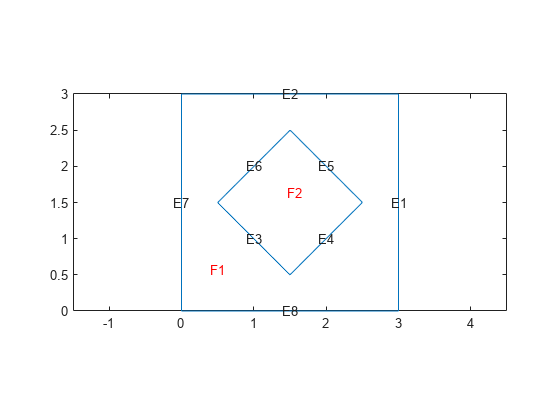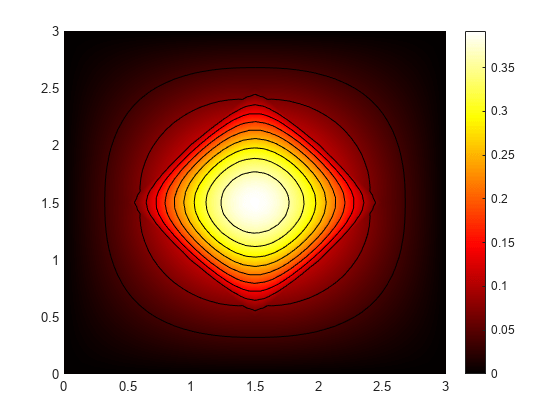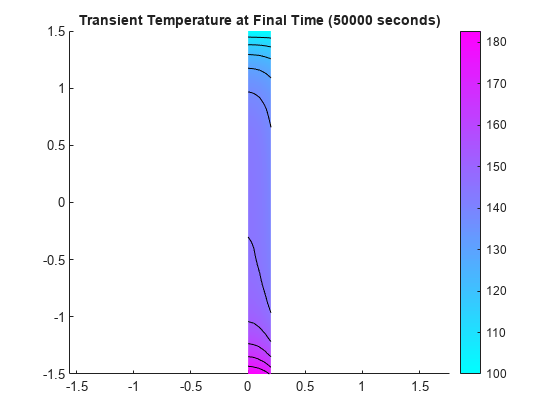TransientThermalResults
Transient thermal solution and derived quantities
Description
A TransientThermalResults object contains
the temperature and gradient values in a form convenient for plotting and
postprocessing.
The temperature and its gradient are calculated at the nodes of the triangular or
tetrahedral mesh generated by generateMesh. Temperature values at the nodes
appear in the Temperature property. The solution times appear in the
SolutionTimes property. The three components of the temperature
gradient at the nodes appear in the XGradients,
YGradients, and ZGradients properties. You can
extract solution and gradient values for specified time indices from
Temperature, XGradients,
YGradients, and ZGradients.
To interpolate the temperature or its gradient to a custom grid (for example,
specified by meshgrid), use interpolateTemperature or evaluateTemperatureGradient.
To evaluate heat flux of a thermal solution at nodal or arbitrary spatial locations,
use evaluateHeatFlux. To evaluate integrated heat
flow rate normal to a specified boundary, use evaluateHeatRate.
Creation
Solve a transient thermal problem using the solve function. This function returns a transient thermal solution as a
TransientThermalResults object.
Properties
Object Functions
evaluateHeatFlux | Evaluate heat flux of thermal solution at nodal or arbitrary spatial locations |
evaluateHeatRate | Evaluate integrated heat flow rate normal to specified boundary |
evaluateTemperatureGradient | Evaluate temperature gradient of thermal solution at arbitrary spatial locations |
filterByIndex | Access transient results for specified time steps |
interpolateTemperature | Interpolate temperature in thermal result at arbitrary spatial locations |



